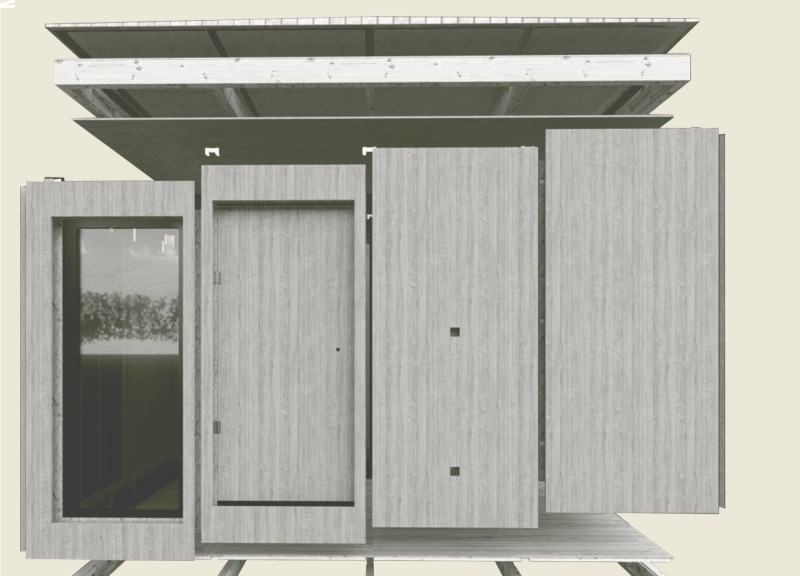5 key facts about this project
At its core, the project functions as a [insert function, e.g., mixed-use facility, residential building, community center], catering to the needs of its diverse users. The design embraces an open layout that encourages interaction among occupants, reflecting the importance of communal spaces in modern urban life. Each area of the building is strategically planned, ensuring an intuitive flow that allows for both privacy and connection. This spatial organization is significant as it enhances user experience while maximizing the efficient use of space.
The architectural design features a striking yet harmonious facade that combines various materials to create a cohesive identity. The use of locally sourced materials emphasizes sustainability while reflecting the character of the local environment. For instance, the incorporation of recycled concrete not only contributes to structural integrity but also aligns with contemporary eco-friendly practices, demonstrating the project’s commitment to reducing its carbon footprint. Additional materials such as cedar wood and low-emissivity glass enhance both the aesthetic appeal and energy efficiency of the structure.
Attention to detail is evident throughout the project, with architectural elements that invite exploration and engagement. Large windows and thoughtfully placed overhangs allow natural light to flood interior spaces, reducing reliance on artificial lighting during the day. This careful consideration of light and shadow creates a pleasant ambiance that is conducive to work and leisure. Outdoor spaces, such as terraces and gardens, extend the living environment, providing a refuge for occupants while promoting interaction with nature.
One of the unique design approaches taken in this project is the integration of innovative technologies that enhance both functionality and sustainability. Features such as rainwater harvesting systems and solar panels reflect a forward-thinking attitude towards environmental stewardship. These elements not only serve practical purposes but also educate users about sustainability practices, reinforcing the project’s role as a community asset.
Moreover, the architectural design draws inspiration from local heritage, incorporating cultural elements that resonate with the community. This integration fosters a sense of place and identity, making the building more than just a physical structure; it becomes a landmark that reflects the story of its inhabitants. The careful balance of modern design with traditional influences illustrates a sensitivity to context that is essential in today’s architectural discourse.
The project embodies an architectural philosophy that prioritizes user experience and environmental considerations. By focusing on creating spaces that are both functional and aesthetically pleasing, the design team has succeeded in delivering a multifaceted solution to urban living. The building stands as an example of how architecture can adapt to meet the needs of contemporary society while respecting the past and contributing to a sustainable future.
For those interested in a deeper exploration of this architectural project, it is worthwhile to review the architectural plans, sections, and various architectural designs that illustrate the meticulous thought and planning involved. These resources offer a comprehensive view of the architectural ideas that shape this project, revealing the intricacies that contribute to its success. Observing how these elements interplay can provide valuable insights into effective architectural practice and inspire future designs.


























